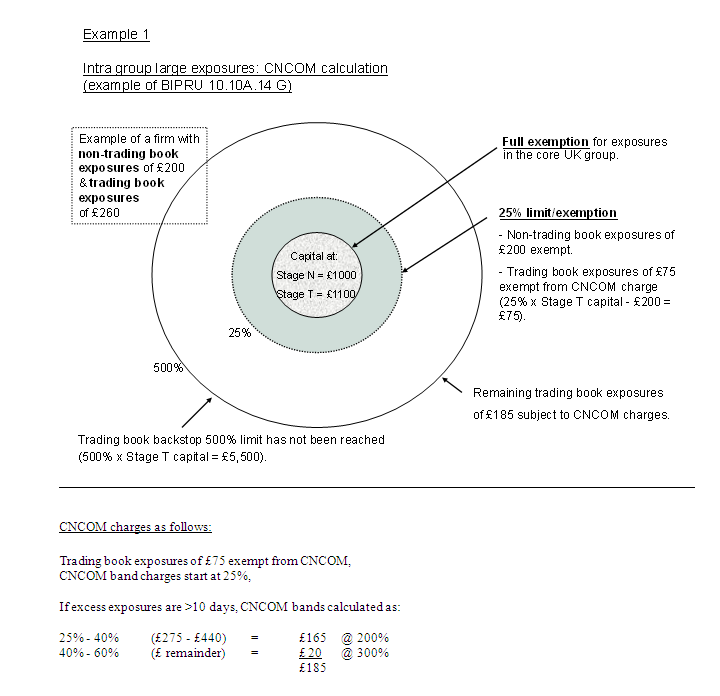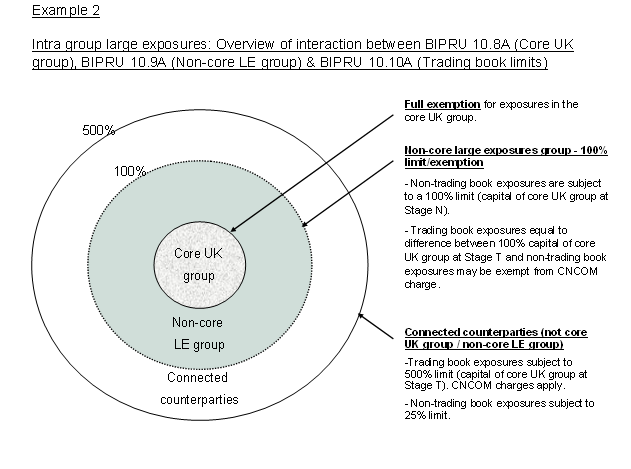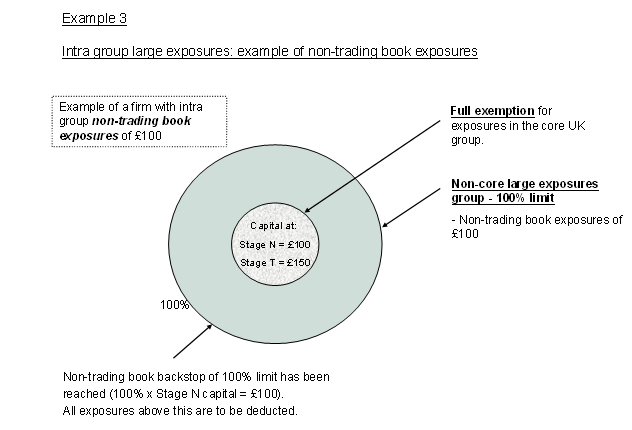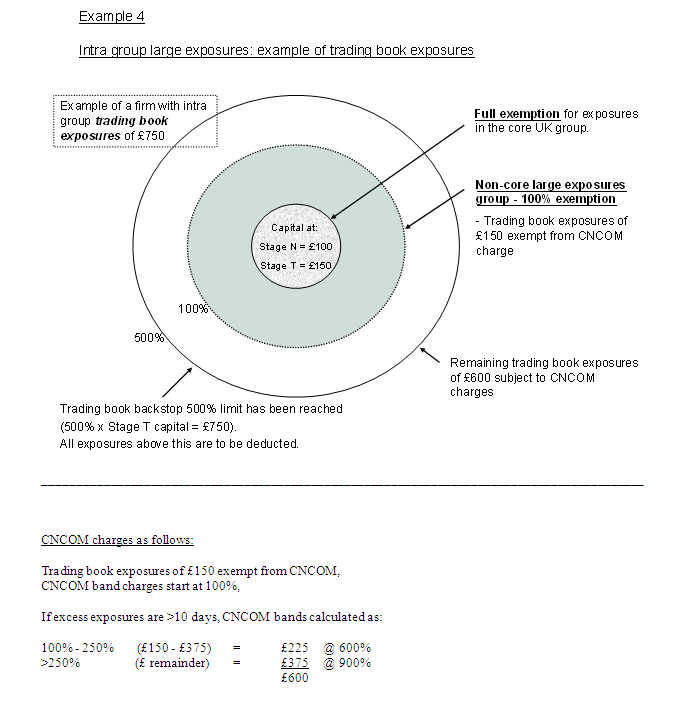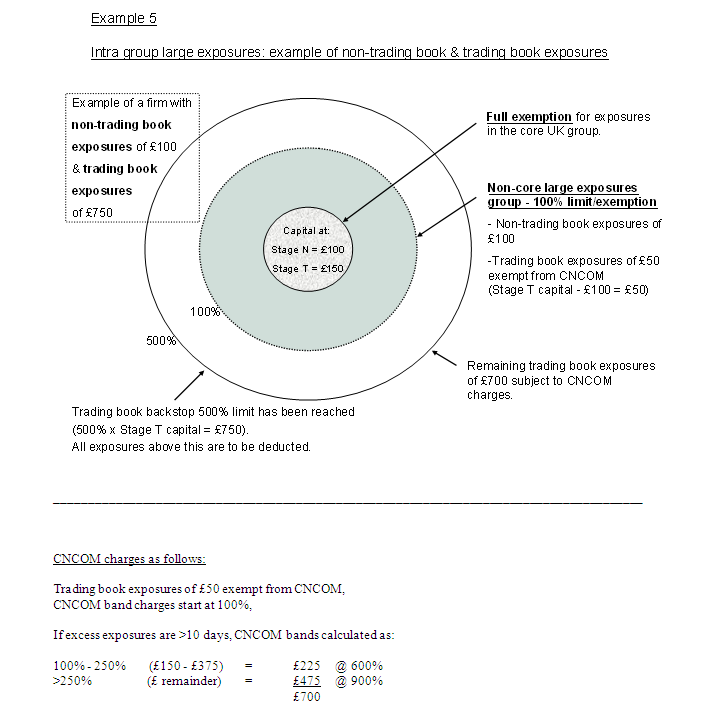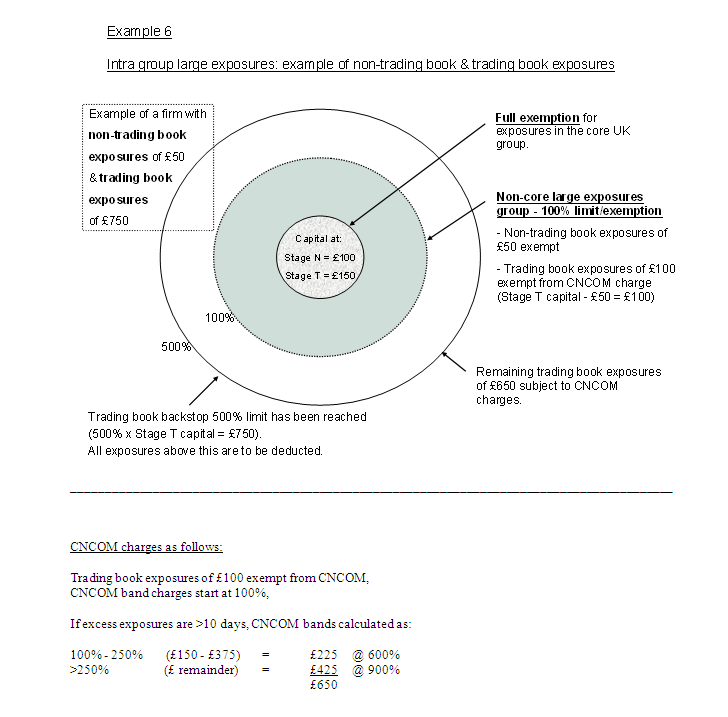|
(1)
|
An firm'scapital resources comprises:
|
|
|
|
|
Tier one and tier two capital resources
|
1000
|
|
Eligible tier three capital resources
|
100
|
|
Amended capital resources
|
1100
|
|
|
(2)
|
The components of the large exposure comprise:
|
|
|
|
|
(a) Non-trading bookexposure
|
200
|
|
(b) Mark to market value of trading book securities:
|
|
|
|
% specific risk weight
|
|
|
Short: qualifying bond
|
1.00
|
(20)
|
|
Long: qualifying commercial paper
|
0.25
|
100
|
|
Long: equity
|
4.00
|
150
|
|
Long: qualifying convertible
|
1.60
|
30
|
|
Total net long securities position:
|
260
|
|
Total net large exposures position [(a) + (b)]
|
460
|
|
Calculating the exposure for which incremental capital is needed
|
|
(3)
|
The short position in the qualifying bond is offset against the highest specific risk weight items - in this case equities:
|
|
|
|
|
Net long equity position (150- 20)
|
130
|
|
(4)
|
The remaining items are ranked according to specific risk weight.
|
|
% specific risk weight
|
Security
|
|
|
0.25
|
Qualifying commercial paper
|
100
|
|
1.60
|
Qualifying convertible
|
30
|
|
4.00
|
Equity (net)
|
130
|
|
(5)
|
The 'headroom' between the non-trading book exposure and 25% of the amended capital resources is calculated.
|
|
|
|
|
25% of amended capital base (1100)
|
275
|
|
Non-trading book
exposure
|
200
|
|
Headroom
|
75
|
|
(6)
|
Applying the securities positions in ascending order of specific risk weight, 75 of the 100 qualifying commercial paper may be counted before 25% of the amended capital base is reached.
The remaining 25 of qualifying commercial paper, along with 30 qualifying convertible and 130 equity (net) are traded securities exposures in excess of the limit and should therefore be covered by incremental capital. The amount of incremental capital should be included in the calculation for determining how much trading book capital a firm should have.
|
|
(7)
|
If the excess exposure has been outstanding for 10 days or less, the specific risk weights for the elements over 25% of amended capital resources should be doubled.
The 25% limit (275) is taken up by 200 non-trading bookexposure and 75 trading bookexposure within the limit. These two items, when added to the items in bold below, total 460. 460 is the total net large exposures position as set out in (2) above.
|
|
|
|
|
|
Qualifying commercial paper
|
25 x 0.25% x 200% =
|
0.125
|
|
Qualifying convertible
|
30 x 1.60% x 200% =
|
0.960
|
|
Equity
|
130 x 4% x 200% =
|
10.400
|
|
Additional capital requirement
|
11.485
|
|
(8)
|
If the excess exposure has been outstanding for more than 10 days, the 25% limit (275) is taken up by 200 non-trading bookexposure and 75 trading bookexposure within the limit. These two items, when added to the items in bold below, total 460. 460 is the total net large exposures position as set out in (2) above.
|
|
|
|
|
(a)
|
Over 25% and up to 40% of amended capital base at 200% (40% of 1100 = 440)
|
|
|
Amount of trading book concentration risk excess = 185
Appropriate % Multiplier Band = 200%
|
|
|
25 x 0.25% x 200% =
|
0.125
|
|
30 x 1.60% x 200% =
|
0.960
|
|
110 x 4.00% x 200% =
|
8.800
|
|
(b)
|
Excess exposure 40% - 60% of amended capital base at 300%
|
|
|
|
20 x 4.00% x 300% =
|
2.400
|
|
Additional capital requirement [(a)+(b)]
|
12.285
|

